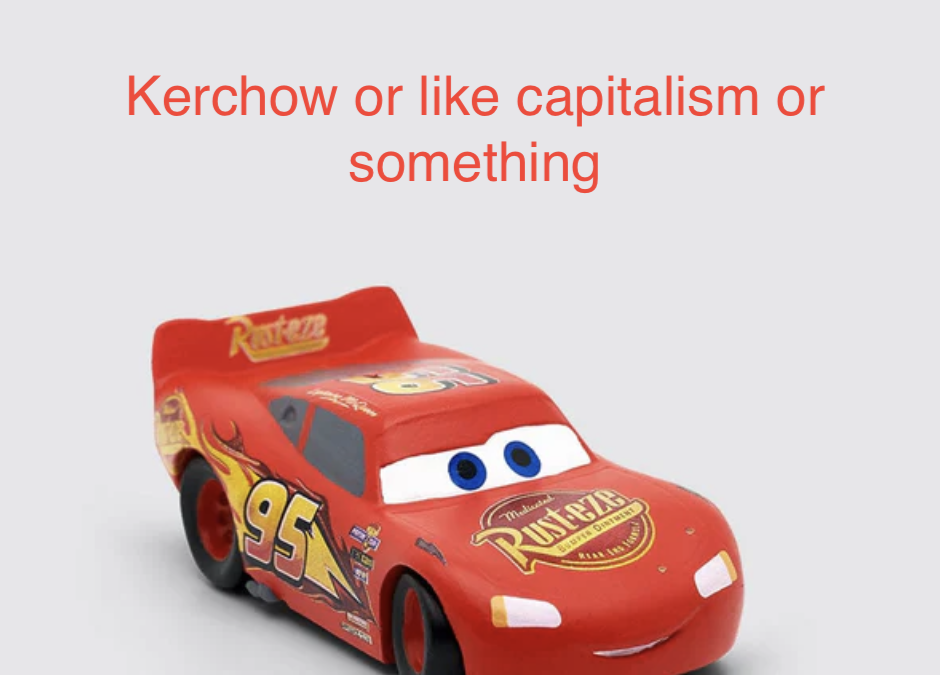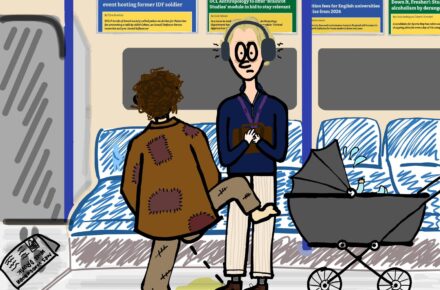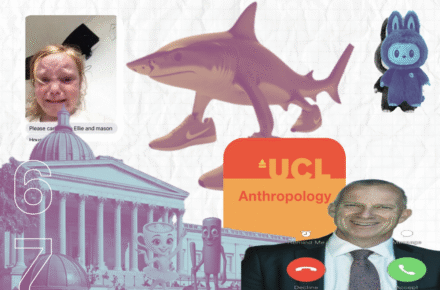Mayra Nassef
When I think about the evolution of humanity in the 21st century, it can chronologically be categorised into two parts: before Cars (2006) and after Cars (2006).
If you really think about it, the release of the first film in the Cars franchise on that fateful day in 2006 marked a cosmic shift in the universe. Something shifted. Something snapped. Since the automotive revolution hinted at in the film, things have never been the same. Ever since then, it is as if humanity’s third eye has been opened. The sheer genius of the film Cars (2006) is something that no mere mortal can comprehend. It is a surprise to me that this piece of prophetic cinema is so easily accessible to the general public. Despite this, there is an untapped context that only a few subspecies can understand. That is why, in my early years of birthhood I, without intention, meticulously studied this masterpiece by watching it approximately 100 times. In this way, my brain mass became composed of around 75% Cars (2006) lines, 15% of “what am I cooking for dinner tomorrow”, and 10% of whatever else compels me to re-watch Cars (2006) on a regular basis.
Firstly, the film operates in a universe whereby automotive vehicles rule the world. In this world, there is no rhyme or reason as to why things are the way they are. They just are. Despite this, the cars do not question their place in the universe, instead simply choosing to exist in a quasi-capitalist society. We do not understand how this system works, as we do not see any cash in the film, or credit cards. In fact, the impossibility of cars holding a credit card makes the mere suggestion laughable. However, cars still have jobs. A large part of the film deals with businesses closing in Radiator Springs due to the introduction of the Interstate road – how does that even happen without some sort of financial system? There must be a financial incentive and I think this is proof that there were humans before. Humans have built a capitalistic system, and cars are still dealing with the fallout. Their traces have been left behind… as cars still live in a hierarchical universe if you take into account this contextual history. This is what tends to happen in an oppressive post-revolutionary society, they tend to mirror the hierarchical political landscape of the previous overlords.
In the Cars (2006) universe, the concept of social mobility is not explained. It is only hinted at with lines like “float like a Cadillac, sting like a Beamer” which suggests that some cars may have the ability to float, and some cars may have the ability to sting, expanding the skill set of some cars beyond the arbitrary functionality of driving that they seem to have. This thereby suggests that some cars may be seen as better than others due to their supernatural extensive skills. Lightning McQueen – our illustrious protagonist – also makes a derogatory comment towards a minivan in one of the first scenes: “A MINIVAN??” he shouts towards Mac as he is inside him – inside his trailer that is – describing a car that is much slower than him and making fun of him for that; even though the joke only makes sense in the human world. In a later scene, he starts to suggest that Porsches are somehow attractive, saying “Holy Porsche”. Clearly, We are just not yet clever enough as a society to interpret this dialogue. However, this is further proof that this is evolutionary, as cars linguistically deal with a world designed by humans – now ruled by automotive vehicles. There is an identity crisis here though, as cars – unlike humans – are built differently to each other in terms of skill set.
This brings me to eugenics. Cars (2006) and UCL have a lot in common. In Cars (2006), cars are manufactured by the Manufacturer – we do not know who this is and we never see him in the Cars films. Perhaps he is the destined One, the One that will emancipate cars in the real world. However, in the film, different types of cars such as race-cars are more or less bound to fit in a job title linked to their biology. Something is just not right here. If we were to “deep it” as the kids say these days, are planes merely obliged to fly around, and are restricted to work in the air? What if they want to become accountants in a seemingly moneyless world? It’s just not right. Are they all prisoners in this universe? Who is this mysterious Manufacturer? Why does he want this? Is he the previous emancipator of the cars? Is he now the oppressor? After the revolution, has the Manufacturer become a tyrant, operating on a Eugenics-based, mechanically determinate, system? Perhaps, he was educated at UCL.
What is the place of humanity in Cars (2006)? The cars have windows and doors, but it is not clear what their intention is. This is proof that cars are revolutionary beings, previously made for humans, and the Cars (2006) film is a warning to humanity that we will one day be taken over by the automotive vehicles we so stupidly undermine. The automotive revolt may be upon us one day. This interpretation of the film is just the start, as people will soon start to wake up and realise the truth. Only time will tell, but when the automotive revolution occurs, we can’t merely say there were no signs; Cars warned us in the year 2006 that this could occur. We were just too blind to see.
This article appeared in CG 87.









